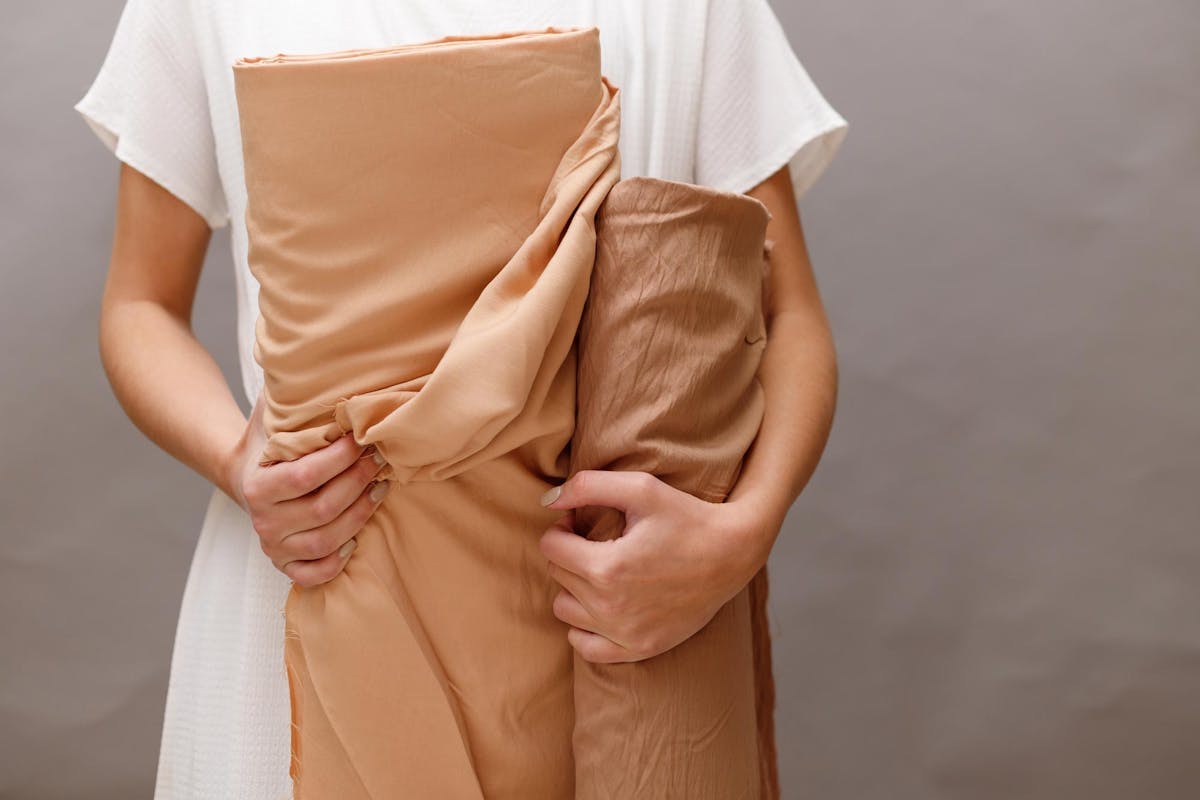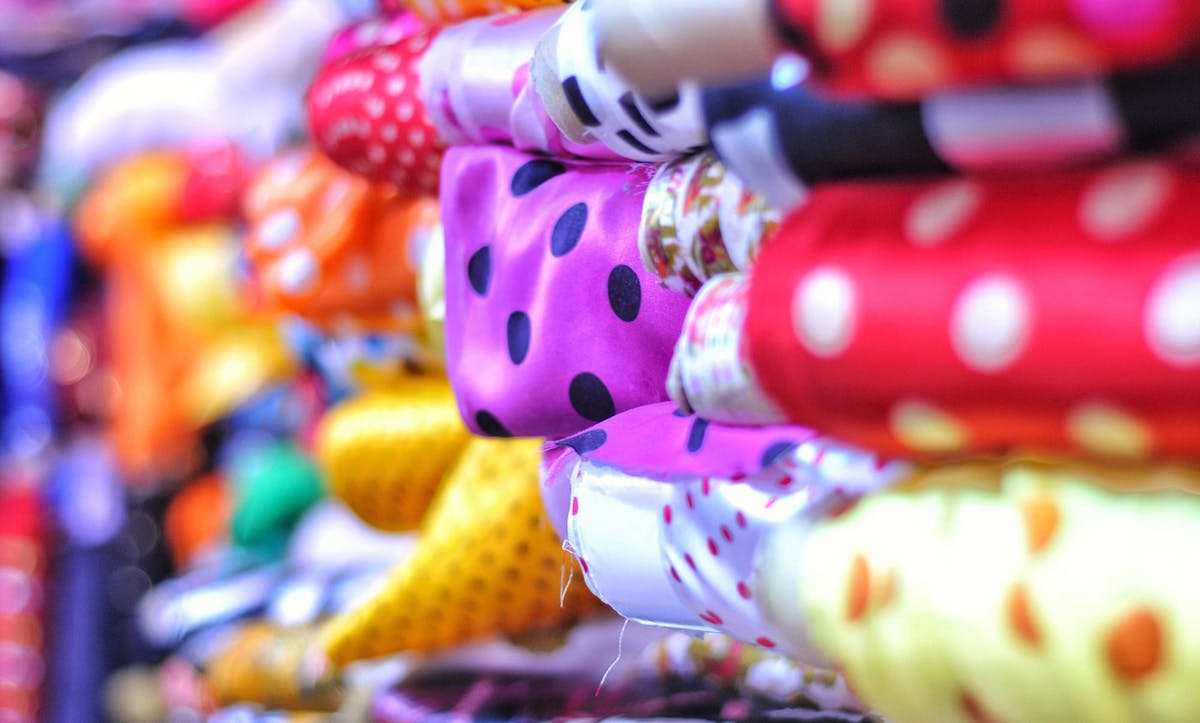How you buy fabric is often a very personal thing. You might be the type that sees a fabric you love and instantly has to buy some, even without a project in mind. Or you might be more reserved with it, only buying fabrics when you have a specific project already mapped out. Most sewists lie somewhere in the middle, with a stash of fabrics at home but still buying fabrics for certain sewing projects.
If you are new to sewing or have trouble choosing the right amount of fabric for your projects, don't stress! We have a collection of tips for buying fabric that will both save you money as well as prevent you from being in the sticky situation of not having enough material for your upcoming sewing project, a win-win!

Buying In Yards Vs. Meters
First things first, double-check where you are buying your fabric and patterns from. Some fabric stores – particularly when buying online – will assume you know whether they sell in meters or yards and don't make it super clear otherwise. So if it is even slightly ambiguous, always confirm with the seller before buying. There is nothing worse than ordering two yards of fabric and expecting two meters!
1 yard = 0.9144m
Fabric For Commercial Clothing Patterns
If you're using a commercial pattern for your next sewing project, there will always be a section that tells you what type of fabric is best and how much of it you will need. This pattern will also likely come with a lay plan or fabric yield, so you can see how it's recommended to cut the pattern pieces out of your fabric. It is always a good idea to follow this yield plan. It's designed to be the most economical way to cut your fabric and deviating from it might mean you run out of usable material.
One thing to look out for when reading the fabric requirements and the lay plan is the width of the fabric. If your desired fabric is a different width to what's listed on the pattern then you may need to adjust the amount of fabric you are buying. We go into further detail about this below, but if you are unsure how much to get, try to find another fabric option that matches the width listed on your pattern until you feel more comfortable making your own fabric yield plan.

Fabric Widths
The typical width of fabric can vary a lot depending on where and how the fabric is made. For wide ones, you may be able to get away with using less yardage/meterage as more pattern pieces can fit side-by-side. However, there is a caveat to this related to the grainline of your pattern pieces. The grainline always needs to be parallel with the selvage, which runs down the length of the fabric. So the amount of fabric will need to be long enough to fit each of your pattern pieces on their correct grainline.
Problems may arise when choosing a particularly narrow fabric. For example, if the lay plan for a pair of trousers includes the front and back leg pieces all side-by-side, you will only need an amount of fabric that matches the length of the leg. However, if your chosen fabric is too narrow to fit all leg pieces side-by-side as per the lay plan, you will need to get an amount that is twice the length of the legs, even if it means you have additional fabric left over.
Dealing With Shrinkage
Natural fabrics (cotton, silk, wool, linen, and hemp) can shrink up to 15% lengthwise when washed for the first time. Good fabric stores will compensate for this by adding extra to the amount of fabric you order, but always double-check if you are unsure. And if they don’t, you will need to order a bit more to compensate for this. The amount of fabric recommended for a project usually doesn't include extra for this shrinkage amount.
When prewashing fabric for the first time, it is best to follow the method of washing and drying that you will eventually use when your item or garment is all sewn up to prevent any mishaps later on. These are the same laundering instructions you can include on your Custom Care Labels too ;)

Pattern Matching Prints and Patterned Fabrics
A patterned or printed fabric is a great way to make your projects unique to you. But choosing a patterned fabric comes with its own set of challenges. Namely, something called pattern matching. If you are unfamiliar with the term, pattern matching is when you cut out your pieces so that the fabric’s pattern matches at the seams, making it harder to notice the seam. It is a technique used for high-end clothing and looks very professional.
If you're using a patterned material, get a bit more fabric than recommended to give yourself more room to maneuver pattern pieces around. To work out exactly how much more you will need, you should try to find how big the repeat of the print is (the distance between two identical parts of the print or pattern). For patterns like checks, stripes, and small-scale prints, you will probably only need to order a very small amount of extra fabric. But for larger designs, this amount will naturally be more.
Fabric shops are a great source of inspiration for your next project. Often the staff in them are sewists themselves and will be able to help you out if you are unsure about something. And if you find yourself becoming a bit of a fabriholic, our Custom Hang Tags work well to keep your stash organized. You can use them to add fiber type, length, width, and even project ideas, to each new piece of cloth.













